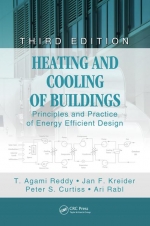Tab Article
Heating and Cooling of Buildings: Principles and Practice of Energy Efficient Design, Third Edition is structured to provide a rigorous and comprehensive technical foundation and coverage to all the various elements inherent in the design of energy efficient and green buildings. Along with numerous new and revised examples, design case studies, and homework problems, the third edition includes the HCB software along with its extensive website material, which contains a wealth of data to support design analysis and planning. Based around current codes and standards, the Third Edition explores the latest technologies that are central to design and operation of today’s buildings. It serves as an up-to-date technical resource for future designers, practitioners, and researchers wishing to acquire a firm scientific foundation for improving the design and performance of buildings and the comfort of their occupants. For engineering and architecture students in undergraduate/graduate classes, this comprehensive textbook:


